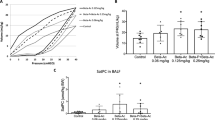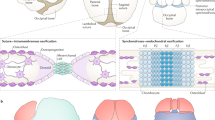Abstract
GENETICALLY different inbred strains of mice have different susceptibilities to the production of cleft palate by a standard dose regimen of corticoids at the critical period during palatal organogenesis1. Because in target tissues corticoids form a specific cytoplasmic cortisol–receptor complex which interacts with the genome, resulting in activation or depression of transcription2,3, we have postulated that susceptibility to corticoid-induced cleft palate is mediated by genetic differences in a cytosolic corticoid receptor protein(s) in palatal anlagen4. Other studies have suggested that susceptibility to cortisone-induced cleft palate is regulated by genes closely linked to the H–2 locus5. We report here that the total level of cytosolic protein binders of 3H-cortisol in maternal and foetal palates on day 11 of gestation correlates with susceptibility to cleft palate and with the H–2 genotype. After separation of macromolecular bound hormone from free hormone on columns of Sephadex G-25 and further separation by microelectrofocusing6, only one maternal and foetal palatal cytosol binder for 3H-cortisol (pI 6.9–7.0) was found to correlate with susceptibility to cleft palate and the H–2 genotype. Thus, a product of a gene in or near the H–2 locus seems to be the glucocorticoid receptor, the level of which must be increased for a congenital malformation to occur.
This is a preview of subscription content, access via your institution
Access options
Subscribe to this journal
Receive 51 print issues and online access
$199.00 per year
only $3.90 per issue
Buy this article
- Purchase on Springer Link
- Instant access to full article PDF
Prices may be subject to local taxes which are calculated during checkout
Similar content being viewed by others
References
Kalter, H., Teratology, Principles and Techniques (edit. by Wilson, J. G., and Warkany, J.), 57–80 (University of Chicago Press, 1965).
Beato, M., Homoki, J., and Sekeris, C. E., Expl Cell Res., 55, 107–117 (1969).
Munck, A., J. biol. Chem., 243, 1039–1042 (1968).
Goldman, A. S., Katsumata, M., Yaffe, S. J., and Shapiro, B. H., Teratology 13, 22, Abstr. (1976).
Bonner, J. J., and Slavkin, H. C., Immunogenetics, 2, 213–218 (1975).
Katsumata, M., and Goldman, A. S., Biochim. biophys. Acta, 359, 112–129 (1974).
Levine, A., Yaffe, S. J., and Back, A., Proc. Soc. exp. Biol. Med., 129, 86–88 (1968).
Reminga, T. A., and Avery, J. K., J. dental Res., 51. 1426–1430 (1972).
Kimmel, G. L., Hartwell, B. S., and Andrew, F. D., Teratology, 13, 28, Abstr. (1976).
Zimmerman, E. F., and Bowen, D., Teratology, 6, 335–343 (1972).
Zimmerman, E. F., Andrew, F., and Klater, H., Proc. natn. Acad. Sci. U.S.A., 67, 779–785 (1970).
Andrew, F. D., Bowen, D., and Zimmerman, E. F., Teratology, 7, 167–175 (1973).
Beato, M., and Feigelson, P., J. biol. Chem., 247, 7890–7893 (1972).
Litwack, G., et al., J. biol. Chem., 218, 7841–7886 (1973).
Singer, S. S., Gebhart, J., and Krol, J., Eur. J. Biochem., 56, 595–605 (1975).
Singer, S., Ito, H., and Litwack, G., Int. J. Biochem., 4, 569–573 (1973).
Lowry, O. H., Rosebrough, N. J., Farr, A. L., and Randall, R. J., J. biol. Chem., 193, 265–275 (1951).
Salomon, D. S., and Pratt, R. M., Nature, 264, 174–177 (1976).
Author information
Authors and Affiliations
Rights and permissions
About this article
Cite this article
GOLDMAN, A., KATSUMATA, M., YAFFE, S. et al. Palatal cytosol cortisol-binding protein associated with cleft palate susceptibility and H–2 genotype. Nature 265, 643–645 (1977). https://doi.org/10.1038/265643a0
Received:
Accepted:
Issue Date:
DOI: https://doi.org/10.1038/265643a0
This article is cited by
-
Corticosteroid-induced cleft palate:Cis interaction of MHC genes and hybrid resistance
Immunogenetics (1985)
-
Corticosteroid-induced abnormality in fetal mice and H-2 haplotype: Evidence of a cytoplasmic effect
Immunogenetics (1983)
-
An H-2-associated difference in murine serum cholesterol levels
Experientia (1982)
-
Influence of H-2-linked genes on glucocorticoid receptors in the fetal mouse palate
Immunogenetics (1981)
-
Corticosteroid-induced cleft palate in mice and H-2 haplotype: Maternal and embryonic effects
Immunogenetics (1981)
Comments
By submitting a comment you agree to abide by our Terms and Community Guidelines. If you find something abusive or that does not comply with our terms or guidelines please flag it as inappropriate.



